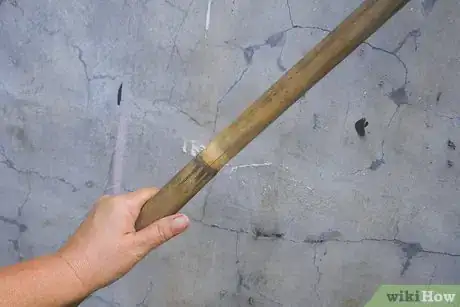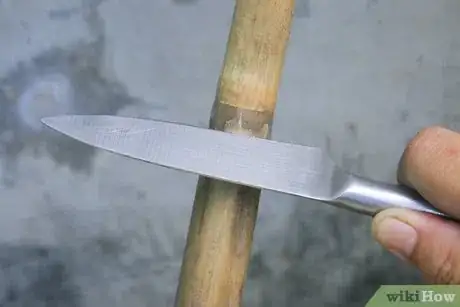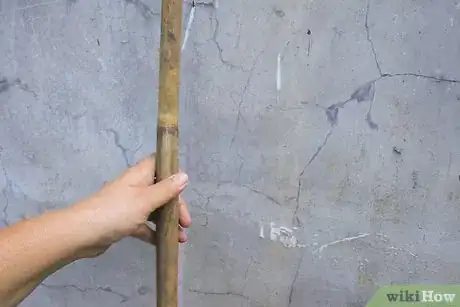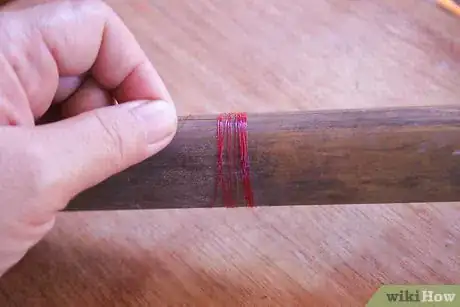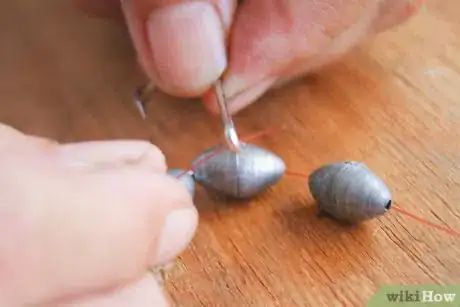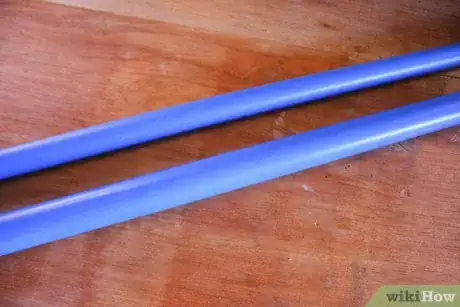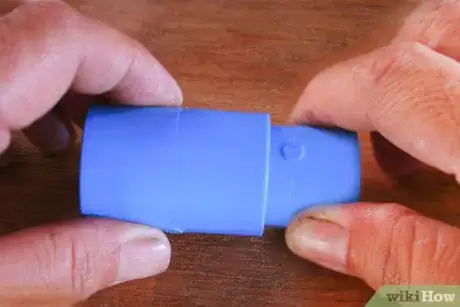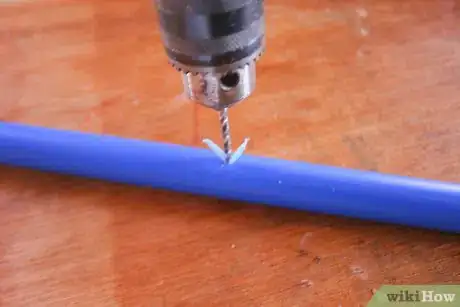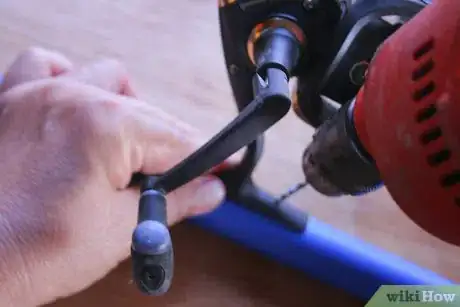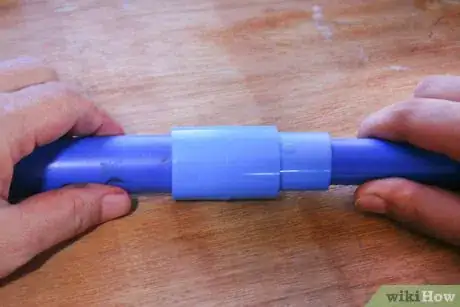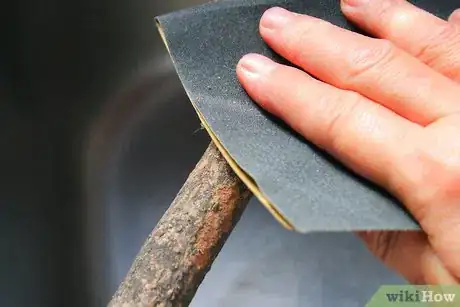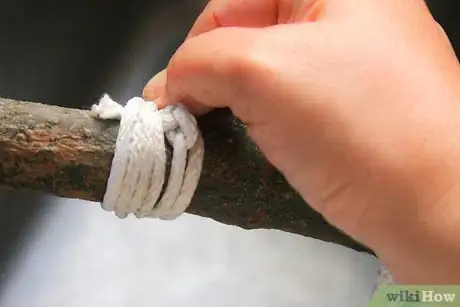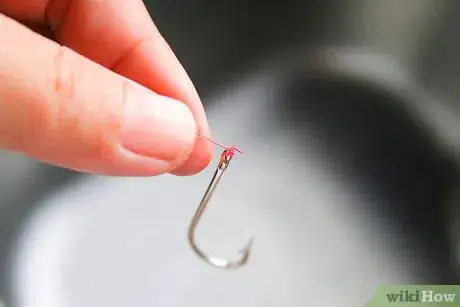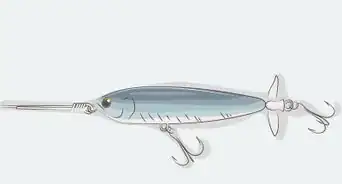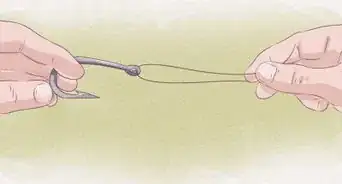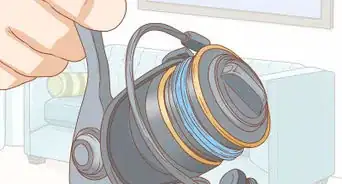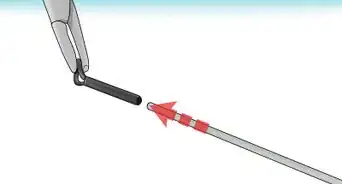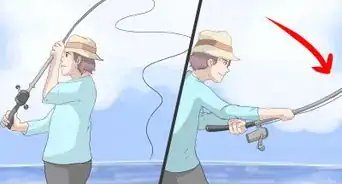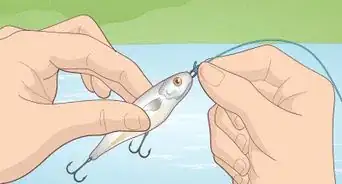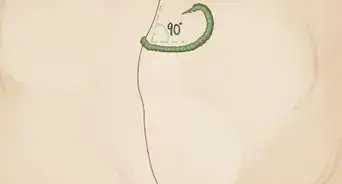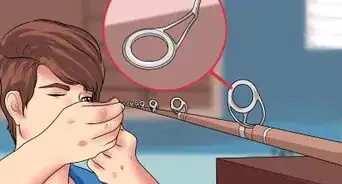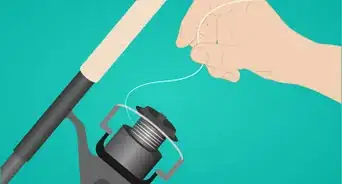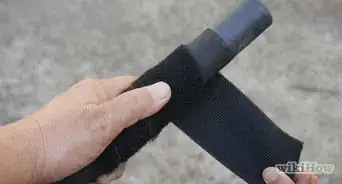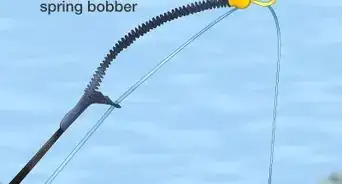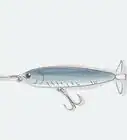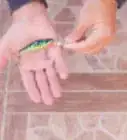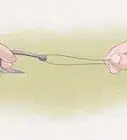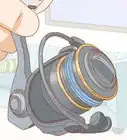wikiHow is a “wiki,” similar to Wikipedia, which means that many of our articles are co-written by multiple authors. To create this article, 32 people, some anonymous, worked to edit and improve it over time.
There are 7 references cited in this article, which can be found at the bottom of the page.
This article has been viewed 279,333 times.
Learn more...
Store-bought fishing rods can be very expensive. For the casual fisher, it might be more cost-effective to make your own. You can make a homemade fishing rod from bamboo cane, some PVC pipes, or even a simple stick!
Steps
Making a Bamboo Fishing Pole
-
1Find a suitable piece of bamboo cane. Find a piece of bamboo cane that’s between 8–10 feet (2.4–3.0 m) long and 1–2 inches (2.5–5.1 cm) in diameter and cut it at the base.[1]
- When it comes to bamboo fishing pole, bigger is not necessarily better. Larger poles can be cumbersome to hold and awkward to transport.
- It’s probably best to cut three or four pieces of bamboo at a time, in case your first piece breaks after you’ve dried it out and you have to begin the process again
-
2Trim and smooth the cane. Use a small sharp knife to trim away any leaves or nubs, as close to the main body of the cane as possible.[2]
- Find a joint at the thicker end of the cane and saw through it. This will ensure that the butt of your fishing pole has a closed end.
- Take a piece of sandpaper and use it to smooth the body of the fishing pole as much as possible.
Advertisement -
3Leave the cane to dry. The next step is to dry out the cane pole. Tie a piece of string around the narrow end of the pole and suspend it from the ceiling. This will ensure that the cane dries evenly and as straight as possible.[3]
- Dry the cane pole in a warm, dry place but do not exposed it to direct sunlight. Sunlight will dry out the cane too quickly, causing it to become brittle.
- Depending on temperature and humidity levels, the cane will take a few weeks to several months to dry out fully. You will know it’s ready when it turns a tan color.
- When the cane is dry pick it up and give it a few test swings through the air to make sure it doesn’t break or bend. If it does, try another piece.
- You want your fishing pole to be as straight as possible, so if it dries with a slight curve you can straighten it out by weighing it with bricks.
-
4Attach the fishing line. Take some 20 lb (9.1 kg) Dacron line and tie 1 end 1–2 inches (2.5–5.1 cm) above the “handle” of the fishing pole.[4]
- Run the line along the length of the pole until you get to the end. This will allow the pole to bend all the way through when you’re fighting a fish, which will prevent the line from snapping. Then take some extra pieces of fishing line and use them to tie the running line to the fishing pole at 2 or 3 different points (including the tip).
- Be careful when tying the running line to the pole—if it’s tied too tightly you won’t be able to slide the line up and down, but if it’s tied too loosely the line will droop and get tangled. Use a whip-finish if possible.
- The length of the fishing line (from the tip of the pole) should measure the total length of the pole, plus an extra 2 feet (0.61 m). If you prefer, the extra 2 feet (0.61 m) can be monofilament leader instead of the Dacron line.
- After you’ve tried this out, experiment with a longer amount of line so you can cast out farther.
-
5Attach the hook, bobber and sinker. Attach your preferred hook or lure to the end of the line along with a bobber and a split-shot sinker.[5]
- Now your homemade bamboo fishing pole is ready to use! To shorten the line, pull it back through the loops and wrap the excess around the handle.
Making a PVC Fishing Rod
-
1Cut 2 PVC pipes. Take 2 pieces of PVC piping—one 1⁄2 inch (1.3 cm) in diameter and the other 3⁄4 inch (1.9 cm).[6]
- Use a saw to cut the PVC pipes to the desired length. Keep in mind that the combined length of the 2 PVC pipes will be the approximate length of your finished fishing rod.
- For example, for a small child-size fishing rod you could cut each pipe to a length of 10 inches (25.4 cm).
- Use some sandpaper to smooth the sawed edges and remove any markings from the body of the pipes.
-
2Attach the slip caps and threaded connectors. You will need two slip caps: one 1⁄2 inch (1.3 cm) and one 3⁄4 inch (1.9 cm) fitting.
- You will also need a 1⁄2–3⁄4 inch (1.3–1.9 cm) threaded connector (female/male) and a 1⁄2–3⁄4 inch (1.3–1.9 cm) threaded connector (female/female).
- These fittings are available very cheaply from the hardware store. Slip each fitting onto the corresponding piece of pipe, but do not glue in place.
-
3Drill holes into the smaller PVC pipe. Take a power drill with a 3⁄32 inch (0.2 cm) drill bit and drill 3 to 5 holes all the way through the 1⁄2 inch (1.3 cm) PVC pipe.
- The number of holes will depend on the length of the pipe you are using. No matter how many holes you make, ensure that they evenly spaced.
-
4Attach the eyelets. Take a number of medium sized binder clips (to match the number of holes you drilled) and remove the silver wire from the clip.
- Use a pliers to bend one leg of the silver wire across the other. When you’re done, there should be a closed loop on one end of the wire and on the other end the legs should point inwards towards each other. Repeat with the other wires.
- Take a wire and clip the legs into the holes on either side of the 1⁄2 inch (1.3 cm) pipe. The loop at the end of the wire forms an eyelet for the fishing line. Repeat with the other wires.
-
5Attach a premade fishing reel to the larger pipe. Buy a premade fishing reel and attach it to the side of the larger 3⁄4 inch (1.9 cm) PVC pipe.
- You can do this by using the same drill bit as before to make 2 holes in the side of the pipe, then screw the fishing reel into place
-
6Screw the PVC pipes together. The last step is to screw the 2 pieces of PVC pipe together to form your fishing rod and run the fishing line through the eyelets. Attach a hook, bobber and sinker to the end of the line.
- The great thing about this fishing rod is that you can remove the slip caps from either end of the rod to store tackle or anything else you want!
Making a Simple Fishing Pole for Kids
-
1Find a sturdy stick. Find a sturdy, straight stick that’s approximately 8 to 10 feet (2.4 to 3.0 m) long and 1–2 inches (2.5–5.1 cm) in diameter. Remove any leaves or branches and use sandpaper to remove any knobbly bits, if necessary.[7]
-
2Attach string and fishing line. Take a piece of string that’s about 20 feet (6.1 m) long and tie it to the narrower end of the stick, about 4 inches (10.2 cm) from the end.
- Make sure the knot is nice and tight. Wrap the remaining string around the end of the stick.
- Tie 2–3 feet (0.61–0.91 m) of thin fishing line to the end of the string, as this will make it easier to attach the hook.
-
3Tie a small hook to the end of the line. Thread a small fishing hook onto the end of the line. When it’s time to fish, unwind enough string from the end of the pole for the hook to reach the required depth.[8]
Expert Q&A
Did you know you can get expert answers for this article?
Unlock expert answers by supporting wikiHow
-
QuestionI need to create eyelets for 12" long, 1/4" diameter wooden dowel fishing poles I made for a mobile. I tried 7 mm dollhouse miniature screw eyes, but they cracked the dowel at the tip. Any ideas?
 Kody LeeKody Lee is a Guide for Fishing Trips in Washington. He has worked as a guide since 2015 and has fished his entire life.
Kody LeeKody Lee is a Guide for Fishing Trips in Washington. He has worked as a guide since 2015 and has fished his entire life.
Guide, Fishing Trips
-
QuestionWhat can I use as a hook?
 Community AnswerYou can turn soda can tabs into fish hooks. You can find instructions online using sites like Pinterest.
Community AnswerYou can turn soda can tabs into fish hooks. You can find instructions online using sites like Pinterest. -
QuestionWhy should bamboo be dry before using it?
 Community AnswerIf moist, it is less durable, and wouldn't be good for catching big fish.
Community AnswerIf moist, it is less durable, and wouldn't be good for catching big fish.
References
- ↑ https://www.youtube.com/watch?v=ak4JNWv9cp4
- ↑ https://www.fieldandstream.com/articles/fishing/bass-fishing/2010/09/how-build-bamboo-cane-fishing-pole/
- ↑ https://goneoutdoors.com/make-cane-bamboo-fishing-pole-5222109.html
- ↑ http://www.fieldandstream.com/articles/fishing/bass-fishing/2010/09/how-build-bamboo-cane-fishing-pole
- ↑ https://goneoutdoors.com/make-cane-bamboo-fishing-pole-5222109.html
- ↑ https://www.youtube.com/watch?v=Mpy2ZIR93qE
- ↑ https://www.youtube.com/watch?v=jsimUZ_G3tE
- ↑ http://www.4tunate.net/2012/10/simple-outdoor-adventures-for-boys-day-20-make-a-homemade-fishing-pole/
About This Article
You can make a simple, homemade fishing rod using either a bamboo pole or a stick. First, get a bamboo pole or a stick that is 8 to 10 feet long and 1 to 2 inches in diameter. Use either a sharp knife or a piece of sandpaper to smooth out the bamboo pole or stick. Tie a piece of fishing line to the end of the fishing rod. Finally, attach a small fishing hook to the end of the line. For more tips on making a homemade fishing rod, like how to make a PVC fishing rod, read on!
